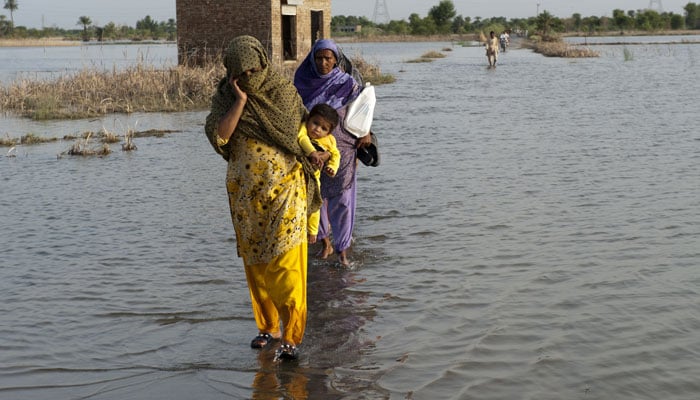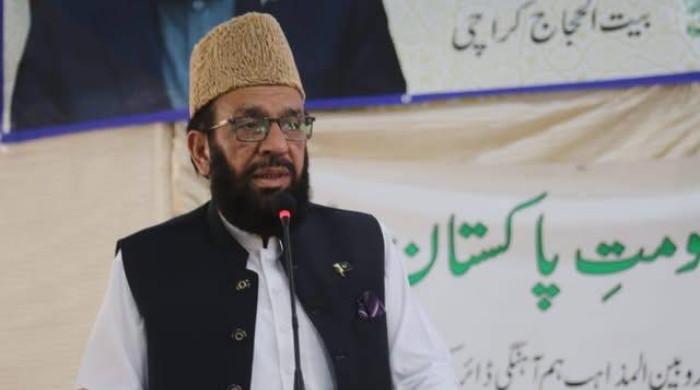Pact for the Future as Pakistan's climate clock ticks
Country's biggest challenge is real-estate-based economy consuming resources like land, water and energy, says expert
September 28, 2024

KARACHI: The Pact for the Future is a significant step forward, recognising the disproportionate impact of climate change on developing countries. Experts, however, caution that its success hinges on a clear action plan.
The recently concluded United Nations Summit of the Future resulted in the adoption of the Pact for the Future, a framework aimed at addressing global challenges and fostering a sustainable world. The summit, held prior to the United Nations General Assembly session, brought together world leaders to discuss pressing issues such as climate change, inequality, and global governance.
The Pact addresses key themes, including sustainable development, peace and security, and innovation, while introducing initiatives like the Global Digital Compact and the Declaration on Future Generations.
With COP29 on the horizon, climate change was a primary focus at the summit. The Pact includes a Global Climate Pact and calls for a shift towards renewable energy, increased investments in climate projects, and mechanisms for financial support to vulnerable nations. The emphasis on follow-up action to ensure these commitments are met is crucial.
Executive Director of the Sustainable Development Policy Institute (SDPI) Dr Abid Qaiyum Suleri, who is also part of the COP29 International Advisory Committee, highlights the importance of the Pact in the context of recent setbacks. He notes that progress made in the first 20 years of the 21st century on food security and poverty reduction has been largely reversed due to the pandemic, the Ukraine war, and climate change.
"We've lost about 50% of our progress," says Dr Suleri, emphasising that the acknowledgement of this in the Pact for the Future by developed countries is a significant step forward. The developing countries, he says, "can't brush away the fact that poverty has increased or that developing countries are being affected by climate change etc".
As a country highly vulnerable to climate impacts, Pakistan stands to benefit from the initiatives outlined in the Pact for the Future.
Environmentalist Masood Lohar, founder of the Clifton Urban Forest (Karachi), enumerates the environmental challenges Pakistan faces: from water scarcity to glacial melt to deforestation. Importantly, the country suffers from what he says are "weak environmental policies" that are a result of a failure to enforce the existing environmental laws, "low levels of public awareness on climate issues, and inadequate institutional frameworks." These, he says, "are interdependent upon one another and require holistic policy reforms, proper resource management, and global cooperation to be eliminated for their long-term effects on the environment."
According to Lohar, Pakistan's biggest challenge, however, is "a speculative real-estate-based economy which is paradoxically eating up resources like land, water and energy".
The Pact for the Future builds on previous climate commitments and emphasises the need for transitioning to renewable energy while phasing out fossil fuel subsidies. The focus on climate mitigation, adaptation, and finance is crucial for countries like Pakistan, which have faced devastating climate disasters in recent years. Dr Suleri also points to the critical issue of financing, which requires reforms in international financial architecture to mobilise the necessary resources for climate action and sustainable development.
Environmental journalist Afia Salam echoes these concerns, stressing that "Suddenly, 2030 seems just around the corner and the Sustainable Development Goals have pivoted themselves right into the centre!"
She adds that "progress has been slow and that tinge of impatience is reflected in the Pact for the Future, where the emphasis has been on walking the talk," warning that without a clear, fast-tracked pathway to implementation, the commitments risk becoming little more than a wishlist.
Salam adivses: "This is why, the points, at least where it addresses climate change and its related affairs, on the eve of COP29, need to be defined on a fast track to be able to deliver solutions. Since the focus was the responsible use of AI technologies, the need to get into specifics is immediate."
The specific actions related to climate change in the Pact for the Future include Actions 9,10, 49, 50 and 52 — actions that aim to accelerate efforts in addressing climate change, restoring and protecting the environment, and reforming international financial systems to meet the needs of developing nations.











